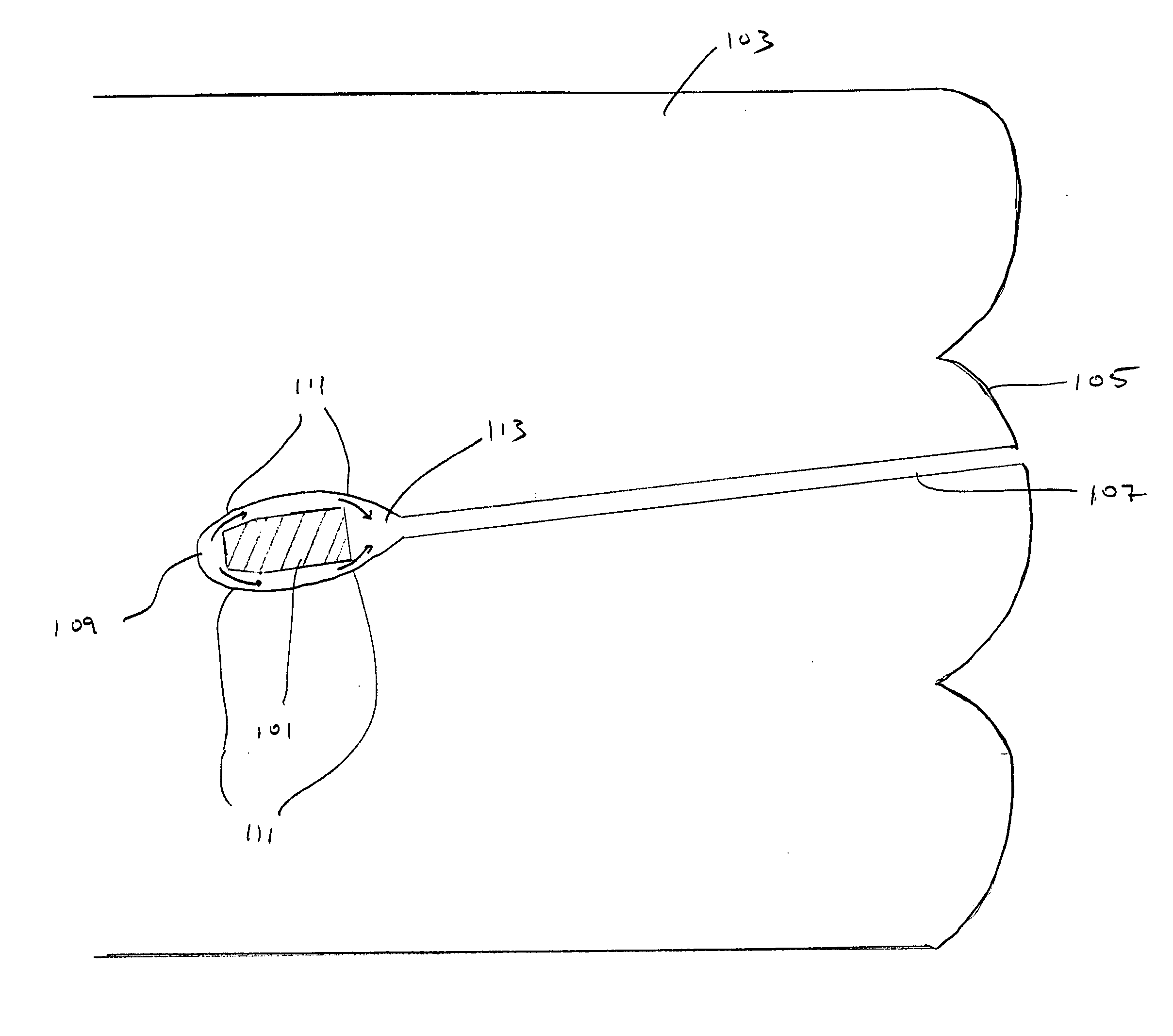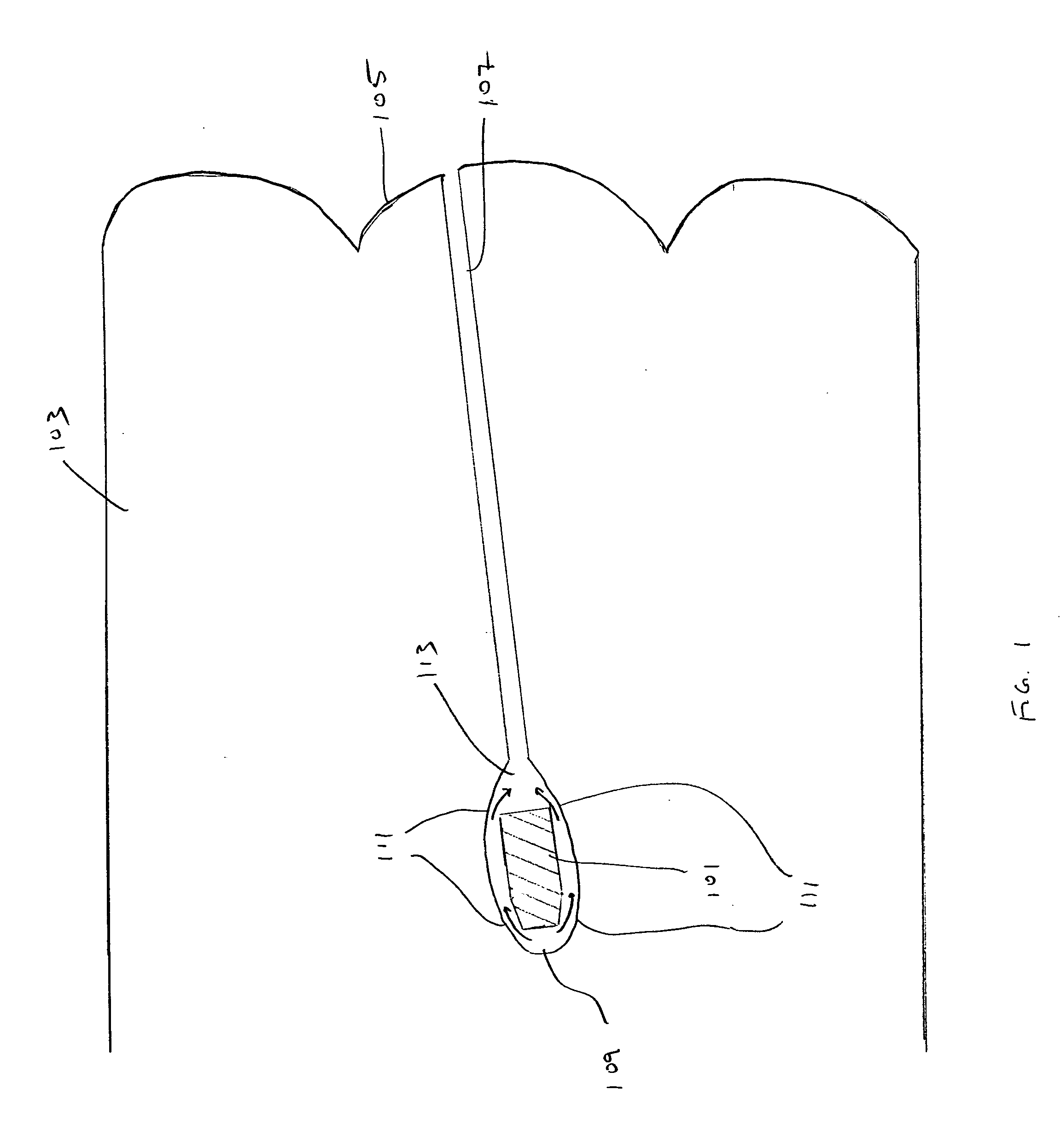Polymeric ballistic material and method of making
a ballistic material and polymer technology, applied in the field of polymer compositions and composite materials, can solve the problems of the difference in the coefficient of friction across the cross section of the projectile, and achieve the effects of slowing down the forward motion of the projectile, increasing the energy transfer between the projectile and the energy dissipation of the projectile energy
- Summary
- Abstract
- Description
- Claims
- Application Information
AI Technical Summary
Benefits of technology
Problems solved by technology
Method used
Image
Examples
example 1
[0106] 60 lb of HMW-HDPE (obtained as a reground HMW-HDPE waste stream containing EVOH (ethylene vinyl alcohol polymer) were combined with 0.6 lb of AMPLIFY 204 (Dow) and 0.3 lb of B.A. CELOGEN (50%) (Uniroyal) and mixed in a high intensity mixer and in an extruder at a temperature of about 400 to 450° F. The composition was extruded through a round, 1 inch diameter conical nozzle to form a tube approximately 1.5-2 inches in diameter. This tube was formed into a flattened spiral by coiling in a heated mold plate. The extruded material had a density of approximately 0.96 g / cm3.
example 2
[0107] A handgun / shotgun target apparatus was prepared by allowing the double thickness spiral material obtained in Example 2 to cool. The identical composition was prepared, except that 0.75 wt % of azo blowing agent (Bergen Intl.) FOAMAZOL 50 or FOAMAZOL 81 was added; the composition was introduced into the extruder described in Example 1, and a 4 inch thick spiral layer of material having density of about 0.37 g / cm3 was extruded onto a heated mold plate. The cooled double thickness spiral was disposed onto this layer while the layer was still hot, and additional polymeric material was extruded around the edge of the double thickness material. Finally, another 4 inch thick spiral layer was extruded on top of the double thickness layer. The resulting material was removed from the mold plate and allowed to cool, forming a composite structure containing a central hard plate of higher density, and a surrounding foam layer of lower density.
example 3
[0108] A rifle target was prepared by repeating the process of Example 1, with the modification that another polymeric material containing fumed silica was included in the apparatus. The target was formed by cold laminating: a first layer having a thickness of 2 inches and having a silica content of 16.66 wt % and a density of 1.17 g / cm3; a second layer having a thickness of 1.25 inches, a density of 0.870 g / cm3 and without fumed silica, a third layer having a thickness of 2 inches and a silica content of 23.78 wt % and a density of 1.26 g / cm3, a fourth layer having a thickness of 1.25 inches, a density of 0.870 g / cm3, and without silica, and a fifth layer having a thickness of 4 inches, a silica content of 42.85 wt %, and a density of 1.499 g / cm3.
PUM
| Property | Measurement | Unit |
|---|---|---|
| Time | aaaaa | aaaaa |
| Density | aaaaa | aaaaa |
| Molecular weight | aaaaa | aaaaa |
Abstract
Description
Claims
Application Information
 Login to View More
Login to View More - R&D
- Intellectual Property
- Life Sciences
- Materials
- Tech Scout
- Unparalleled Data Quality
- Higher Quality Content
- 60% Fewer Hallucinations
Browse by: Latest US Patents, China's latest patents, Technical Efficacy Thesaurus, Application Domain, Technology Topic, Popular Technical Reports.
© 2025 PatSnap. All rights reserved.Legal|Privacy policy|Modern Slavery Act Transparency Statement|Sitemap|About US| Contact US: help@patsnap.com



